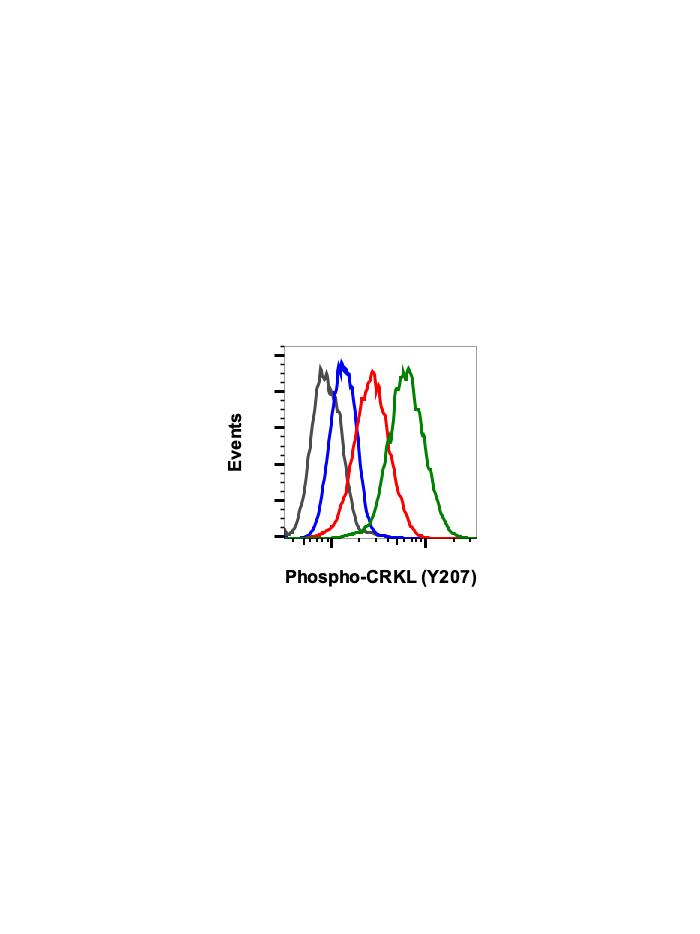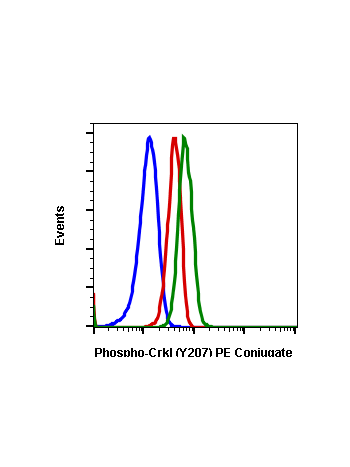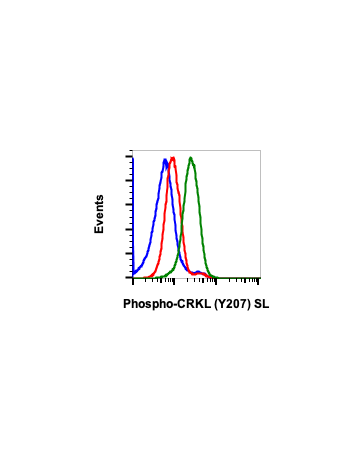Phospho-CrkL (Tyr207) (G4) rabbit mAb
From
$210.00
In stock
Only %1 left
SKU
2091
CrkL (v-Crk sarcoma virus CT10 oncogene-like protein) is an adaptor protein composed of one Src Homology 2 (SH2) and two Src Homology 3 (SH3) domains separated by flexible linker sequences that act as building blocks to assemble multiprotein complexes (1). The Crk adaptor proteins (Crk and CrkL) constitute an integral part of a network of essential signal transduction pathways in humans and other organisms that act as major convergence points in tyrosine kinase signaling. CRKL is required for the normal development of multiple tissues that rely on fibroblast growth factor 8 (FGF8). Phosphorylation of Crk on Tyr 221 or CrkL on Tyr 207 causes intramolecular binding of the linker region to the SH2 domain, sequestering the SH2 and SH3N and preventing them from binding target proteins (2,3). Mounting evidence indicates that dysregulation of Crk proteins is associated with human diseases, including cancer and susceptibility to pathogen infections.
| Applications | Flow Cytometry, WB |
|---|---|
| Clone | CrkLY207-G4 |
| Format | Unconjugated |
| Validated Reactivity | Human, Mouse |
| Cross Reactivity | Predicted to work with mouse, rat, and other homologues. |
| Detection | Anti-Rabbit IgG |
| Clonality | Monoclonal |
| Immunogen | A synthetic phospho-peptide corresponding to residues surrounding Tyr207 of human phospho CrkL |
| Formulation | 1X PBS, 0.02% NaN3, 50% Glycerol, 0.1% BSA |
| Isotype | Rabbit IgGk |
| Preparation | Protein A+G |
| Recommended Usage | 1µg/mL – 0.001µg/mL. It is recommended that the reagent be titrated for optimal performance for each application. See product image legends for additional information. |
| Storage | -20ºC |
| Pseudonyms | Crk-like protein; CRKL; v-crk sarcoma virus CT10 oncogene homolog (avian)-like |
| Uniprot ID | P46109 |
| References | 1. Tten Hoeve, J.,et al., (1993). Oncogene 8: 2469-2474. 2. Rosen MK, et al., (1995) Nature, 374 477-479. 3. Kobashigawa Y, et al., (2007) Nat Struct Mol Biol.14:503-510. |
Write Your Own Review



